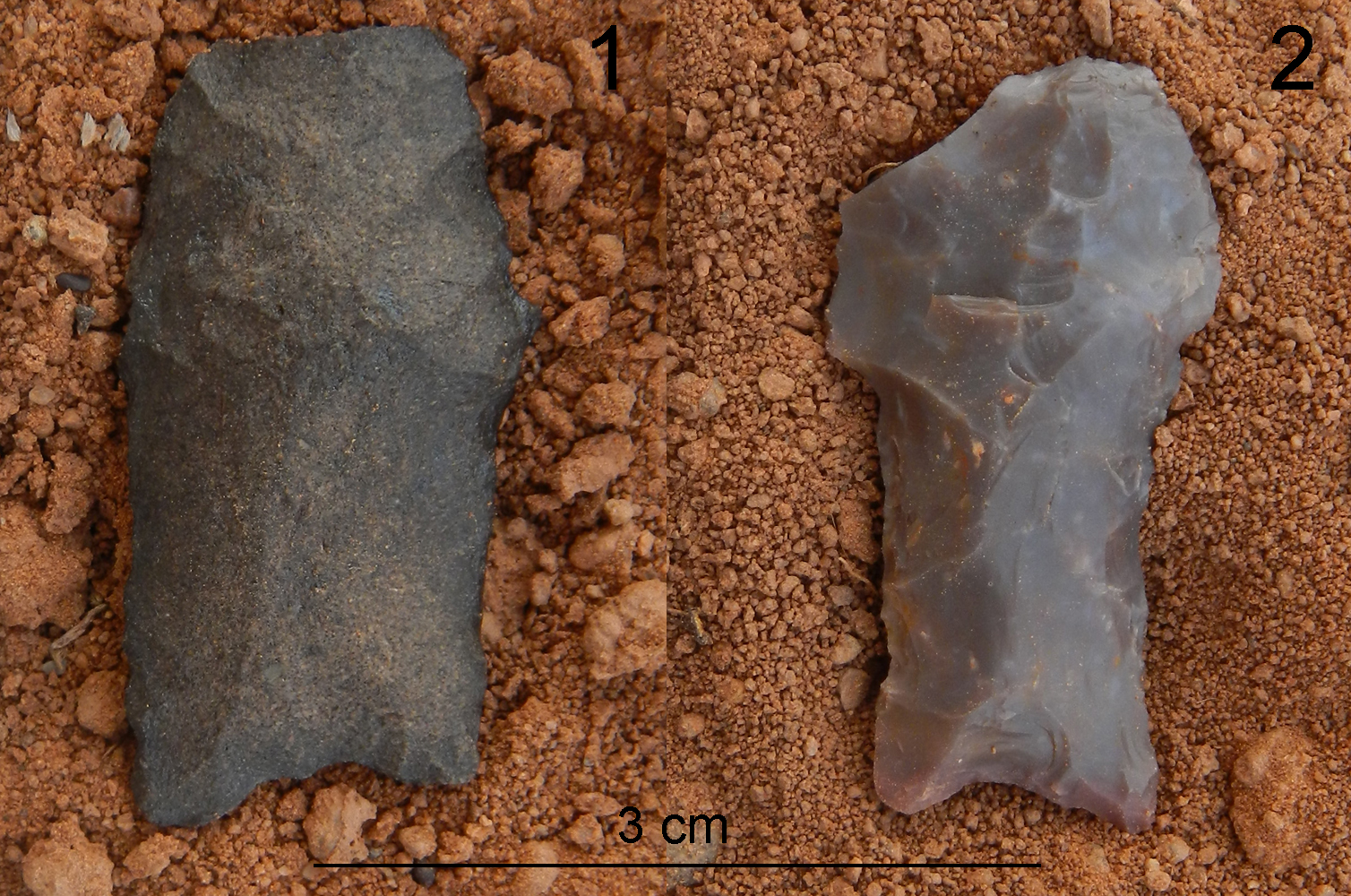Archaeological Culture: Early Archaic, Oshara Tradition
Geographical Range: Concentrated on the Colorado Plateau, but found in eastern Arizona, most of New Mexico, southern Utah, southwestern Colorado, and into northern Mexico.
Date Range: 8000(?) – 5000 B.P.
Size: Substantial variation in size, in part because points are often heavily reworked/resharpened: – Average: 33.0 mm long, 19.1 mm wide, and 5.7 mm thick; stem length: 16.0 mm; stem width: 19.1 mm (Lyndon 2005 2: 58, Table 2); Average: 41.6 mm long, 20.9 mm wide, and 8.4 mm thick; stem length: 20 mm; stem width: 16.6 mm (Dello-Russo et al. n.d. : Table 1); Average: 42.2 mm long, 22.9 mm wide, and 7.78 mm thick; stem length: 16.7 mm; stem width: 17.9 mm (Des Planques 2001: Table 3).
Shape: Stemmed-lanceolate; excurvate blade margins, long straight, slightly contracting or expanding stem, and weak (sloping) shoulders; some examples have a single shoulder; serration relatively rare.
Cross-section: Biconvex to nearly diamond-shaped.
Base: Concave to notched; often basally thinned.
Flaking: Percussion and pressure; flaking pattern is typically random, but occasionally collateral.
Grinding: Lateral grinding of the stem margins (variable in intensity); basal grinding usually present; sometimes grinding is absent entirely.
Materials: Basalt, chert, rhyolite, and obsidian.
Other Names: Rio Grande, Escobas. Prior to Sandia being discarded as a type: Sandia II.
Comparisons: Early Bajada points are distinguished from Jay points by the basal treatment (concave to notched base and basal thinning); Late Bajada points have better-defined shoulders and concave bases, and are generally smaller. The bases of Bajada points are also narrower than earlier concave-based points. Bajada stem length is longer than the later Pinto/San Jose points.
Compiled from the following sources:
Baker, Tony. (2000) The New Mexico Archaic/The Oshara Tradition (link opens in new window).
Dello-Russo, Robert, James Moore, and Gavin Bird. (n.d.). Photographic and Metric Documentation of Early Diagnostic Artifacts from the Bockman Collection (link opens in new window).
Des Planques, Scott A. (2001) Early and Middle Archaic Projectile Point Technologies in the Closed Basin Area of the San Luis Valley, Colorado. M.A. thesis, University of Montana. Theses, Dissertations, Professional Papers. Paper 2124.
Justice, Noel D. (2002) Stone Age Spear and Arrow Points of the Southwestern United States. Indiana University Press, Bloomington.
Lyndon, Michael G. (2005) Projectile Points as Indicators of Preceramic Occupation of the Coconino Plateau. M.A. thesis, Department of Anthropology, Northern Arizona University, Flagstaff.
Compiled by:
Meghann M. Vance, Northern Arizona University Anthropology Laboratories

